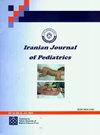儿童肝移植受者的药物依从性
IF 0.4
4区 医学
Q4 PEDIATRICS
引用次数: 0
摘要
背景:越来越多的儿童接受肝移植并进入青春期,尽管他们一生都必须服用免疫抑制药物。目的:本研究旨在确定肝移植受者的不依从率,并确定其潜在的病因。方法:在伊朗设拉子进行横断面调查,以测定儿童肝移植受者的药物依从性。通过访谈收集患者的人口学、社会经济和临床特征。采用经验证的莫里斯基8项药物依从性问卷(MMAS-8)评估药物依从性。结果:共157例患者参与本研究,平均年龄12.73±4.02岁。根据Morisky依从性评分,12.1% (n = 19)、25.5% (n = 40)和62.4% (n = 98)分别被划分为低、中、高依从性组。在所有研究变量中,移植后随访时间与伊朗儿童肝移植术后依从性显著相关。结论:报告的不依从率和原因与以往的研究相似,这是非常显著的。适当的指导、财政援助和引进新技术是克服不依从的策略之一。本文章由计算机程序翻译,如有差异,请以英文原文为准。
Medication Non-Adherence Among Pediatric Liver Transplant Recipients
Background: More and more children are undergoing liver transplantation and reaching adolescence, even though they must take immunosuppressant drugs for their entire lives. Objectives: This study aimed to determine the non-adherence rate in liver transplant recipients and identify its potential etiologies. Methods: A cross-sectional survey was performed to assay medication adherence among pediatric liver transplant recipients in Shiraz, Iran. The patients' demographic, socioeconomic, and clinical characteristics were collected via interviews. Medication adherence was assessed using a validated Morisky 8-item Medication Adherence Questionnaire (MMAS-8). Results: A total of 157 patients with a mean age of 12.73 ± 4.02 participated in this study. Based on the Morisky adherence scores, 12.1% (n = 19), 25.5% (n = 40), and 62.4% (n = 98) were categorized as low, moderate, and high adherence groups, respectively. Among all studied variables, and follow-up time after transplant were significantly associated with adherence among children after liver transplantation in Iran. Conclusions: The rate and reported causes of non-adherence are similar to those found in previous studies, which is quite remarkable. Proper instruction, financial aid, and recruitment of new technologies are among the strategies to overcome non-adherence.
求助全文
通过发布文献求助,成功后即可免费获取论文全文。
去求助
来源期刊
CiteScore
0.90
自引率
20.00%
发文量
75
审稿时长
6-12 weeks
期刊介绍:
Iranian Journal of Pediatrics (Iran J Pediatr) is a peer-reviewed medical publication. The purpose of Iran J Pediatr is to increase knowledge, stimulate research in all fields of Pediatrics, and promote better management of pediatric patients. To achieve the goals, the journal publishes basic, biomedical, and clinical investigations on prevalent diseases relevant to pediatrics. The acceptance criteria for all papers are the quality and originality of the research and their significance to our readership. Except where otherwise stated, manuscripts are peer-reviewed by minimum three anonymous reviewers. The Editorial Board reserves the right to refuse any material for publication and advises that authors should retain copies of submitted manuscripts and correspondence as the material cannot be returned. Final acceptance or rejection rests with the Editors.

 求助内容:
求助内容: 应助结果提醒方式:
应助结果提醒方式:


